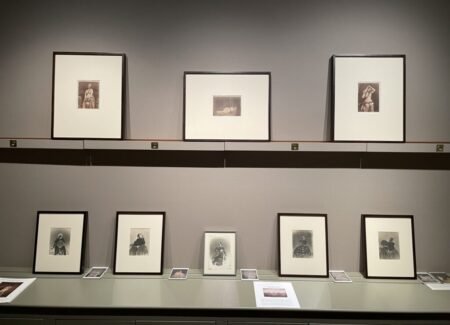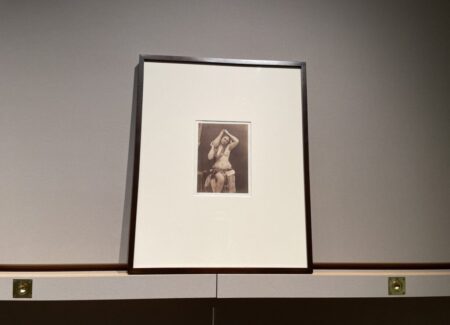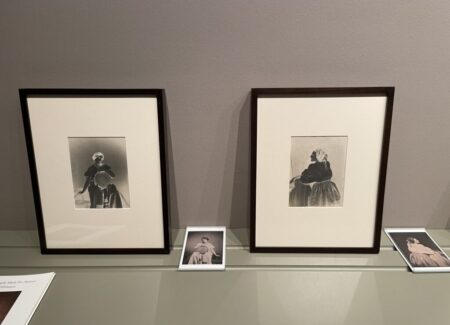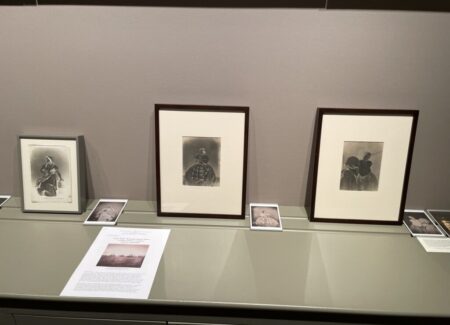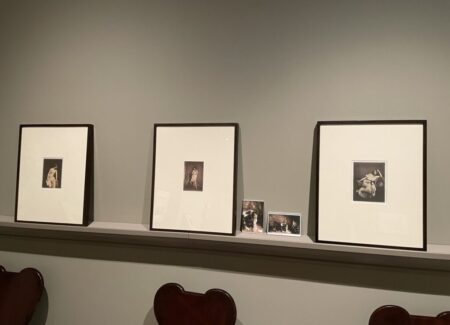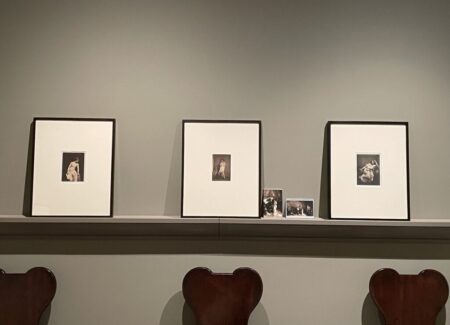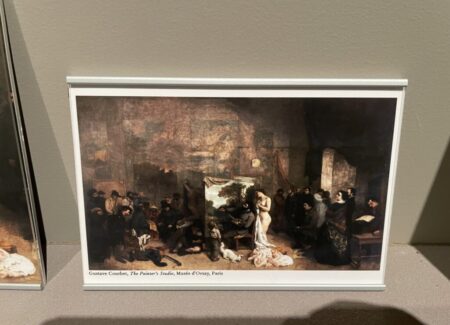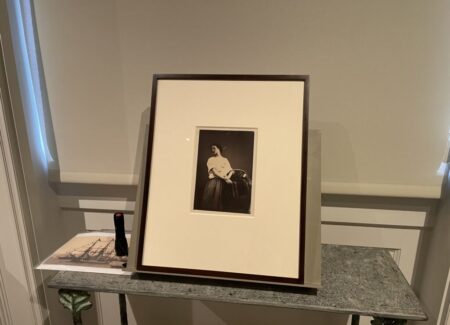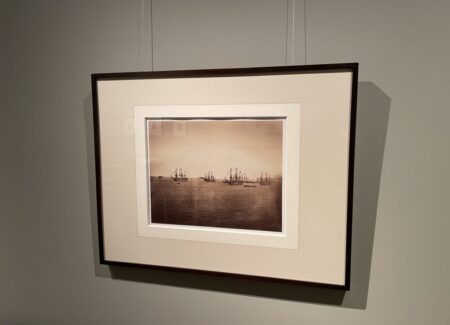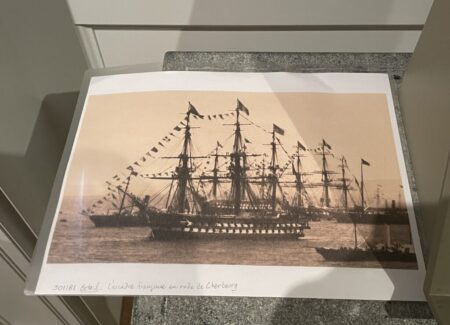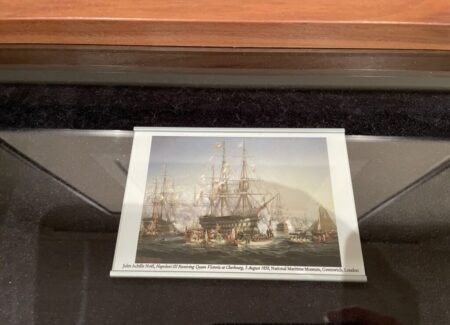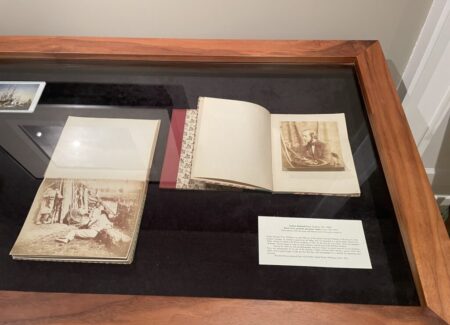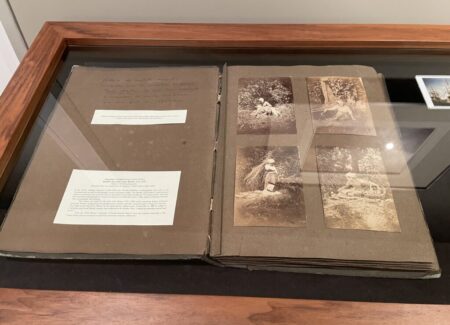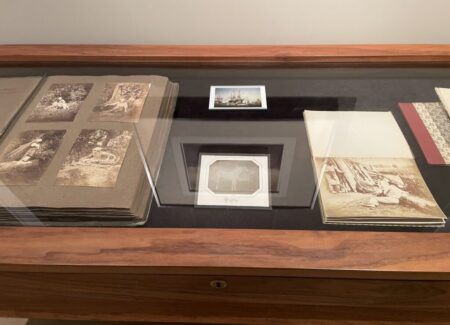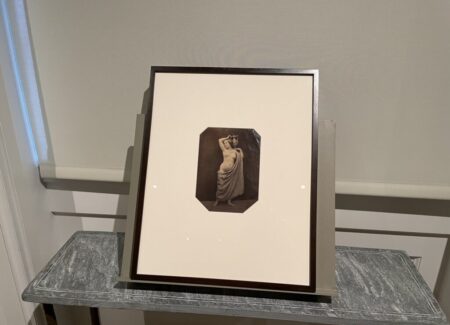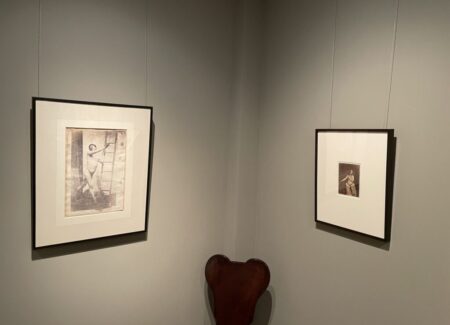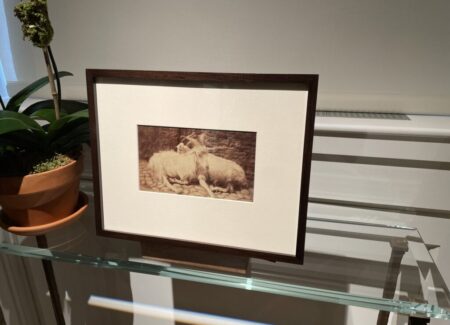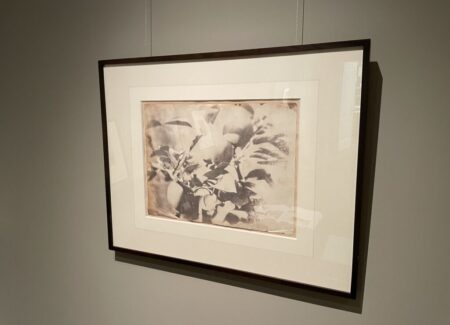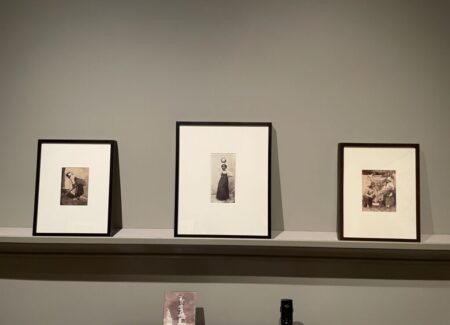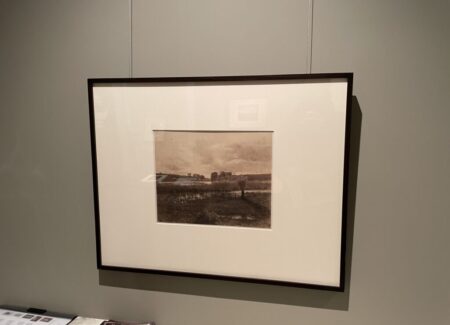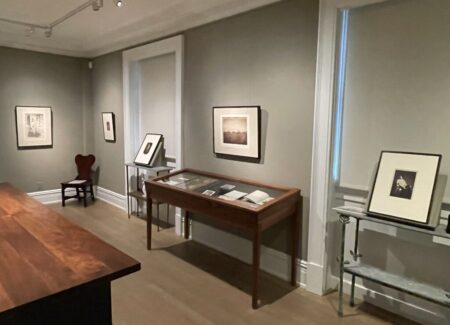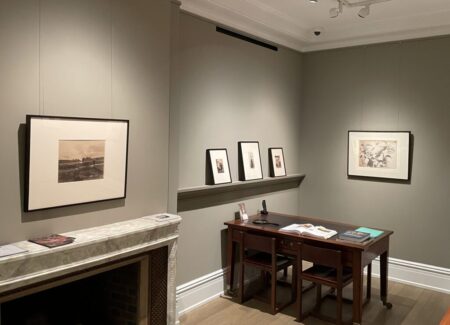JTF (just the facts): A total of 30 photographs and 4 albums, variously framed/matted and displayed in the main gallery space and the entry area. (Installation shots below.)
The following works are included in the show:
- Julien Vallou de Villeneuve: 9 coated salt prints from paper negatives, 1853, 1853-1854; 8 paper negatives, c1852
- André Giroux: 1 salt print from a paper negative, c1855
- Edmond Lebel: 1 albumen print from a collodion negative, 1860s
- Giacomo Caneva: 1 coated salt or albumen print from a collodion negative, 1850s
- Circle of Giacomo Caneva 1 albumen print from a collodion negative, late 1850s
- Sydney Richard Percy: 1 albumen print from a collodion negative, c1855; 3 albums of 66 salt prints and albumen prints from glass negatives, c1854-1856
- Circle of Charles Simart: 2 salt prints from enlarged collodion negatives, c1856-1860
- Félix-Jacques Antoine Moulin: 1 coated salt print from a glass negative, 1853
- Gustave Le Gray: 1 albumen print from a collodion negative, 1858
- Giraudon’s Artist: 1 album of 138 albumen prints, c1870
- Louis-Auguste Bisson: 1 quarter plate daguerreotype, c1844
- Auguste Bruno Braquehais, 1 coated salt print from a glass negative, 1950s
- Eugène Cuvelier, 1 albumen print from a paper negative, late 1850s
- Jean-Victor Warnod: 1 albumen print, 1850s
Comments/Context: In the first decades after the invention of the medium, the early proponents of photography were not only experimenting with (and refining) their radical new form of image making, they were also searching for ways to leverage their pictures in other artistic disciplines, perhaps as a visual substitute for note taking or sketching. Painters had long purchased various forms of prints, etchings, and lithographs as source material for their work, thereby enabling a small industry dedicated to producing such imagery, and in the 1840s and 1850s, it was becoming increasingly possible for photographs to fill that same need with even more precise and realistic examples. This smart show dives into that transitional moment in France, unearthing a range of early photographic examples, particularly by Julien Vallou de Villeneuve, that were intentionally crafted for use by painters.
As seen here, in both salt prints and paper negatives, Vallou made both genre studies and female nudes for his clientele, featuring a wide range of functional poses, costumes, and setups. Some of the women are seen in essentially classical poses (standing, seated, and reclining), with bodies loosely clothed by white drapery. Other models are more elaborately staged in full skirts, striped fabrics, patterned aprons, beaded necklaces, braided hair, and head coverings, with props like a tambourine, a woven basket, a milk jug, a leather-bound book, or a richly patterned carpet adding an Orientalist mood.
Some methodical historical detective work has unearthed a potential connection between Vallou and the painter Gustave Courbet, making this burgeoning relationship between photography and painting in France a bit more clear. While working on his massive canvas The Painter’s Studio (in 1855), Courbet wrote a letter to his patron Alfred Bruyas urging him to send him “that photograph of a nude woman about which I have spoken to you. She will be behind my chair in the middle of the painting.” And indeed, as seen in a reproduction of the painting, Courbet did include a nude figure in the composition, in a pose quite similar to the one in Vallou’s photograph of a standing nude (from 1853-1854). Other research has connected some of the poses in Courbet’s painting The Bathers to Vallou’s various images, and has also confirmed that the two men shared at least one model (named Henriette Bonnion.)
Another moment of potential overlap between early photography and painting begins with a Gustave Le Gray seascape made in Cherbourg in 1858. The photograph documents the visit of Queen Victoria to the opening of the newly expanded port, with her small royal steamship seen in front of an arrangement of French ships. Examined up close, Le Gray’s image features flags and pennants flying from the masts and rigging of the French ships, as well as sailors arrayed in lines on the spars of a ship further in the distance. These details feature prominently in an 1859 painting of the scene made by the French maritime painter Jules-Achille Noël, making a link more than plausible.
The rest of the show is filled out with additional examples of photographs made for the use 19th century painters. Genre portraits offer a range of posed scenes, including a woman working with a washboard, women carrying vases, jars, and urns on their heads or shoulders, a woman with a basket over her arm, and a pair of gypsy girls in traditional clothing. One album made for the painter Jules Breton features some 138 prints of women posed in the forest. And other images feature specimen horses and farm animals, as well as studies of apple branches and other plants. In each, we see photography being adapted to the particular needs and styles of painting, and thereby pushing painting to respond to photography’s own visual vocabulary of realistic detail, creating a sense of back and forth dialogue.
When we look at these works now, it’s intriguing to consider how this aesthetic borrowing and positioning influenced the development of early photography – the painters saw these photographs as intermediate source material, while we now see the images as finished stand alone works that have their own power even outside any relationship to painting. In this way, Vallou’s best photographs feel like a bridge, speaking with the past in the provocative language of the future.
Collector’s POV: The works by Julien Vallou de Villeneuve in this show range in price from $3500 to $95000. The other works on view, by various makers, range in price from $3000 to $95000. Only a handful of prints by Vallou de Villeneuve have sold in the secondary markets in the past decade, so gallery retail likely remains the best option for those collectors interested in following up.
